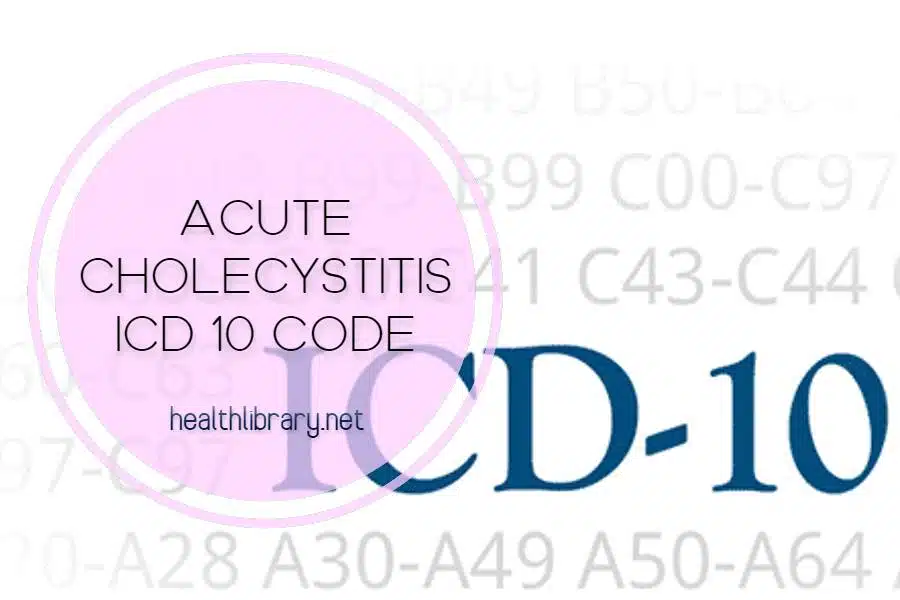The ICD-10 code for acute cholecystitis is K81.0, and knowing this information is critical for appropriately diagnosing and documenting a patient’s care. Learn more about acute cholecystitis, other associated illnesses, and how to acquire the correct ICD-10 number here.

Definition and Symptoms of Acute Cholecystitis
Acute cholecystitis is an inflammation of the gallbladder, a small organ located under the liver that stores bile. The most common symptom of acute cholecystitis is a steady, severe pain in the upper right abdomen that may extend to the right shoulder or back.
Other symptoms can include nausea, vomiting, fever, and jaundice. In some cases, the pain may be relieved by leaning forward or sitting up, and may be worsened by lying down or deep breathing.
Acute cholecystitis is usually caused by a gallstone that becomes lodged in the ducts that carry bile from the gallbladder to the small intestine. This blockage can cause inflammation and infection in the gallbladder.
Treatment typically involves removing the gallbladder, either with surgery or by using sound waves to break up the gallstone.
Read: Which Type of Asthma is More Severe, Restrictive or Obstructive?
Which ICD-10 CM Code Applies?
The ICD-10 CM Code for acute cholecystitis is K81.0, which specifically refers to “acute calculous cholecystitis”.
When coding this condition, it is important to remember that the code must reflect the cause of the acute cholecystitis as well as any complications that may have arisen due to the condition.
If there are additional diagnoses related to the cholecystitis, such as choledochal cysts, they should be coded separately.
What Documentation is Necessary?
Accurate and complete documentation is essential when coding for acute cholecystitis. In addition to the clinical symptoms, physicians should document a detailed history, physical exam findings, lab tests and any imaging performed.
Documentation should also include information about operative procedures as well as any post-operative care that was required for treatment or management of acute cholecystitis.
When to Use a Sequela Code
A sequela code, also known as a late effect code, is used to identify a condition caused by a prior sickness or injury. These codes, together with the primary diagnostic code, are used to show that the current disease is a long-term result of a past sickness or injury.
Sequela codes are typically used when the condition is:
- Chronic and expected to be long-lasting
- Significantly impacts the patient’s functioning or quality of life
- Not considered to be a new illness or injury
- Not considered to be a complication of the original illness or injury
- It is important to note that sequela codes should not be used to indicate a condition that is a complication of the primary diagnosis. Also, the primary diagnosis should be coded first, and the sequela code should be used to give additional information about the patient’s current condition.
Examples of conditions that may have a sequela code include scarring after a burn injury, chronic pain after a fracture, or loss of vision due to a previous eye infection.
Additional Resources for Researching ICD-10 Codes
When it comes to ICD-10 codes for acute cholecystitis, there are many additional resources available to research and better understand the coding process.
The Centers for Medicare & Medicaid Services (CMS) website offers tremendous guidance about the ICD-10 code set, including an online search tool to browse through a comprehensive list of diagnostic codes.
Additionally, other professional organizations such as the American Medical Association (AMA) provide helpful books and directories that can help medical professionals navigate ICD-10 with expert precision.